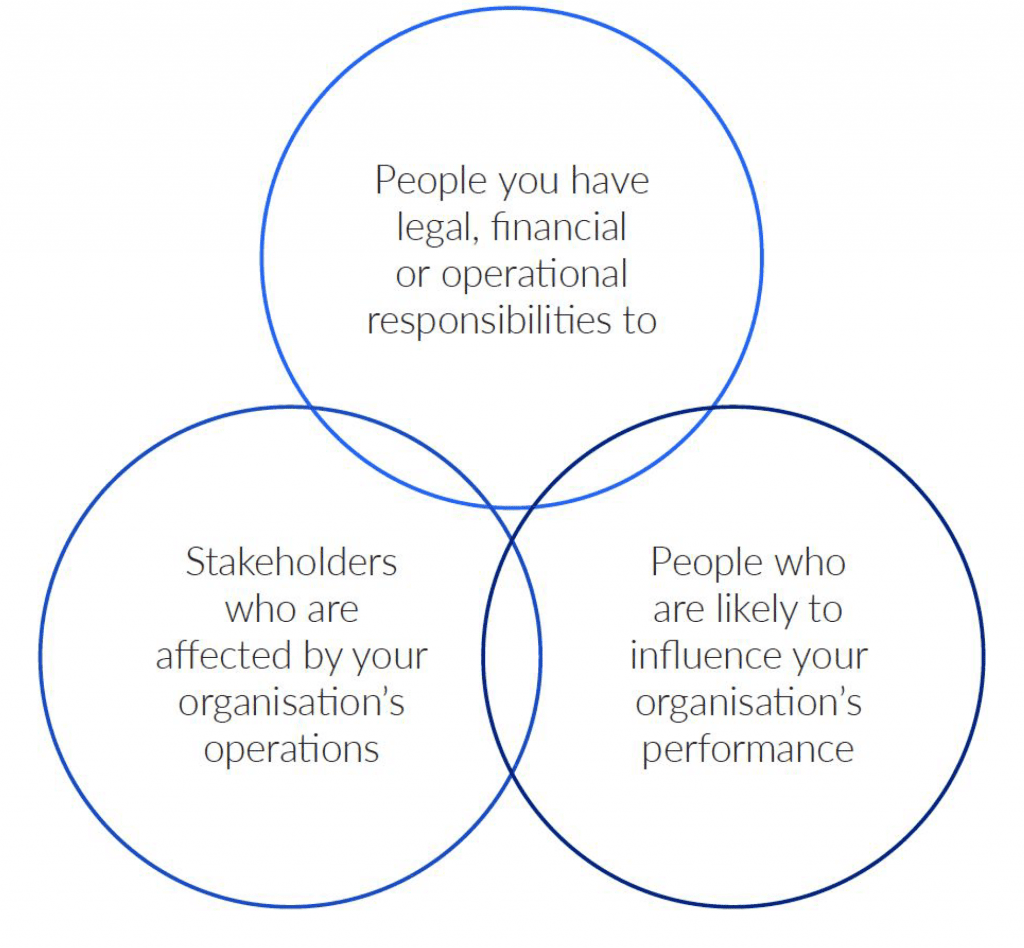All companies rely on partnerships and collaboration to achieve their business objectives. The most important opportunities you’ll go after and the issues you’ll face cannot be addressed alone, via direct action.
A stakeholder is any individual or group who can affect (or is affected by) your company’s objectives or actions. These are the people and groups who will determine the success – or failure – of what you are trying to achieve.
Why are they important?
The benefits of engaging stakeholders are numerous:
- Better management of risks and reputation (as stakeholders can alert us to potential issues or shortcomings)
- Improved reputation and greater trust between the company and its stakeholders
- Pooling of resources (knowledge, people, money and technology) to solve problems and reach objectives that cannot be achieved by acting alone
- Identification of new strategic opportunities
- Ability to learn from stakeholders - integrating stakeholder feedback and input deeply into all aspects of the company’s operations
- To inform, educate and influence stakeholders to improve decision-making and actions that impact on the company
How do I know who my stakeholders are?
Start by identifying all potential stakeholders — people, groups, or organisations who have an interest in or influence over your objectives today and who may have one tomorrow.

Action
Write down their names on a whiteboard or in a shared virtual space. Try to be as granular as possible — you can always eliminate duplicates or those who actually don’t have ‘skin in the game’ later.
Naturally, your stakeholders will include your customers or clients. Include your employees too, given that without them you can’t service your clients. The following groups of stakeholders can serve as a helpful guide:
- Employees - Current employees, potential employees
- Customers - Direct customers, indirect customers (affiliate, referrer)
- Owners - Investors, shareholders, creditors
- Governments and Regulators - State and federal governments, regulators, oppositions, public authorities and policymakers
- Opinion makers - Media, influencers, analysts, ratings agencies, industry opinion leaders
- Suppliers - Suppliers, distributors, contractors and business partners
- Industry - Competitors, industry associations or trade groups
- Community - Advocates, NGOs, residents near company facilities, chambers of commerce, community organizations, special interest groups and general public
As you build your list, consider:
- Past and current engagements - who you regularly talk with
- Future opportunities - including future customer groups and business partners
- Interested groups - via your social media profile and an online search to identify who is currently talking about your business
- Your wider impact - step back and consider who is most impacted by your operations and decisions (such as a local community or supply chains)
What now?
Listing every possible stakeholder can be an exhausting task. Though you may find yourself noting that for the first time, your list of stakeholders is much broader than you anticipated! This is the first step to influencing and shaping your stakeholders views and actions in support of your business. The deeper insights and ‘aha’ moments are found when we analyse which of them are the most important and what to do next. That’s where we can assist.
Interested to learn more?
CoFactor helps businesses identify and map their stakeholders to determine those most influential to the company's strategic priorities. We provide targeted, effective engagement plans for you and your team and guide leaders to integrate stakeholder insights into company decisions and actions.